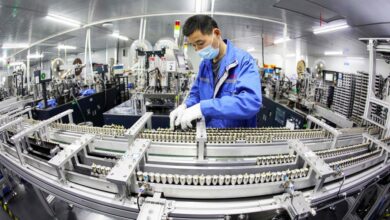Chinese cosmetics challenge global brands with affordable allure

China’s mass-market beauty products are gaining traction overseas, undercutting established brands on price – a trend that could help upstarts challenge the industry’s biggest names.
In the first half of this year, China’s cosmetics exports rose 12 per cent year on year to 18.7 billion yuan (US$2.6 billion), according to customs data. The US, UK, Indonesia, the Netherlands and Japan were the top export destinations, the data showed.
Meanwhile, overseas sales of Chinese beauty products on AliExpress doubled in the past year, with Europe, Mexico, Brazil and Japan emerging as some of the top-performing markets, according to the cross-border e-commerce platform owned by Alibaba Group Holding, which also owns the Post. The company did not provide additional data.
A McKinsey survey in June found that 63 per cent of consumers did not think premium brands were better than mass brands – a shift that has helped grow the global market share of mass and “masstige” skincare and colour cosmetics by 5 and 4 percentage points, respectively, over the past five years. Eyeshadow, eyeliner, lipstick, blush, lip pencils, lip gloss, highlighter, concealers and foundation are some of the products that fall under colour cosmetics.
“Consumers may still consider beauty to be an affordable discretionary item, but that doesn’t mean the industry should take the ‘lipstick effect’ for granted,” said the US consultancy. It also noted that as many as 24 per cent of consumers reported trading down to cheaper beauty products since June last year.
In Southeast Asia, this trend is playing to China’s advantage. Affordable Chinese skincare and colour cosmetics were expanding “aggressively” in the region and were expected to cause “the strongest disruption” to local players and global incumbents alike, while leaving the premium segment largely untouched, according to a Euromonitor report in July.
Source link



